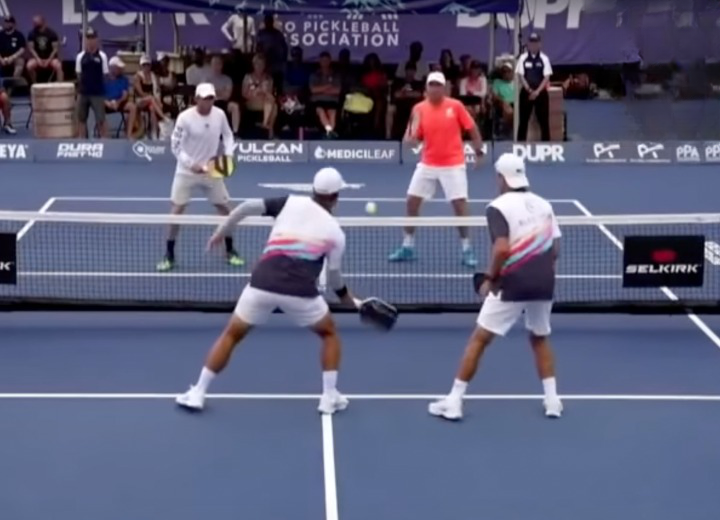Pickleball Gameplay Win More Points with Pickleball Stacking

As you become a more seasoned pickleball doubles player, it is only natural that you start to look for strategies and tactics to improve your game and help you win more points and matches. One such strategy is stacking, and players can implement this strategy relatively easily and quickly. But what is it, and how do you do it? In this post, we'll explain everything you need to know about pickleball stacking. We'll also give you some tips on how to use this strategy to your advantage. So what are you waiting for? Read on to learn more!
What is Pickleball Stacking?
Stacking in pickleball may seem complicated but has a pretty simple definition: it's a way of court positioning when both players on a team are lined up on the same side of the court. Once the ball is hit, the players move to their preferred side of the court to maximize the chances of hitting their strongest shot. If one player has a strong forehand, stacking will keep that player’s forehand in the middle. This will allow the team to cover the court as best as they can.
How to use Pickleball Stacking?
Although it’s more common to use stacking on serve, you can also deploy this strategy when your team is receiving.
While Serving

Players A and B are the stacked serving team starting the point on the deuce side.

After serving, Player A will slide to the ad side.
If they score, Player A will serve from the ad side. Players A and B won't have to stack since they are already positioned on their preferred sides.
While Receiving

Players A and B are the stacked receiving team. Player C is the server on the deuce side and is serving to Player A.

After returning the serve, Player A will cross-over to the ad side. Player B will slide into the deuce side.

If the serving team scores, Players C and D will rotate, and Player C will serve from the ad side to Player B.

After returning the serve, Player B will cross-over to the deuce side. Player A will slide into the ad side.
When to use Pickleball Stacking?
One of the most common situations for using pickleball stacking is when there is a left-handed and a right-handed pickleball player on the same team with their strong shot being forehand. Stacking will be advantageous when it allows the right-handed player to shift to the ad side, or the left-handed player to shift to the deuce side. This way both players will have their forehands in the middle most of the time.
Another situation when using stacking can be advantageous is when both players on the team are either left-handed or right-handed, but one of the players has a very strong backhand. Similarly, in the mixed doubles, if the woman’s backhand isn’t as strong as the men’s backhand, it would make sense for them to stack.
Helpful Tips
- You don’t need to use stacking throughout the entire game. You can change your strategy at any time to keep your game from becoming predictable. This will keep your opponents on their toes!
- Always make sure that your team is serving and receiving on the correct sides. You didn’t work this hard only to lose a point for mixing the sides. Your current score and remembering which sides you and your partner were on when the new game started will help you determine the correct sides easily: if your score is even, you should be on the same side as you were when the game started; if your score is odd, you and your partner should be switched from your original positions. For example, if you started the game on the deuce side and your score is 2, then you should be serving or receiving on the deuce side. If the score is 3 in this example, then you should be on the ad side.
- You can do a ¾ stack if one of the players isn’t as fit or agile. This way your team will stack on serve and only stack on return when the returning player is fit enough to run across the court. Because stacking on return requires the returning player to cross-over, it might be better to stay in traditional positioning when the less agile player is returning.
Now that you know a thing or two about stacking, go ahead and give it a try. You may just find that this is what your game was missing to get that competitive edge over your opponents.
Happy stacking!